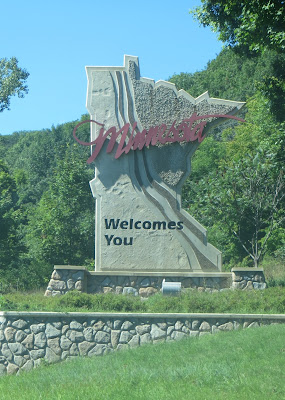December
24, 1909 – Dr. Tomasso Jonnesco of Bucharest, Romania, arrived in Rochester this morning and had the opportunity of exploiting the use of his new discovery, stovaine, upon three of the greatest test cases offered him on his tour of this country. The clinic was held this afternoon at St. Mary’s Hospital and was watched by 40 visiting surgeons.
The first case was an 82-year-old woman troubled with a hernia. Her case was such that an operation with the usual anesthetic was impossible because of the weakness of her heart and yet an operation was imperative. The patient submitted to the ordeal with great fortitude considering her age.
Anesthesia was administered between the twelfth dorsal and the first lumbar. Dr. E. Starr Judd of Rochester was the operator. When the new anesthetic was first administered, the pulse of the patient dropped to 40, but within a few minutes, it was up to 53. Six C G of stovaine with a small amount of strychnine was given. Dr. Jonnesco, through his interpreter, explained that ten C G was the usual amount of stovaine, but the patient was similar in strength to a child and a smaller amount was necessary.
At first a slight sigh was heard and that was all. In two and a half minutes Dr. Judd commenced the operation. At times the patient would endeavor to raise her head and see what they were doing, but this was made impossible by a large cloth stretched before her head. It was evident to the surgeons present that the woman was immune from all the pain or from any nervous sensation from the use of the knives or needles.
At the completion of the operation Dr. W. J. Mayo was heard to say, ”It was a success, all right,” and congratulated the Romanian savant. Dr. Mayo then spoke to the members of the medical profession and stated that Dr. Jonnesco had used stovaine in 750 cases since July 1908, and none had shown any ill effects.

Dr. William J. Mayo1
The second patient was a man of 52 years, troubled with inguinal hernia. He, too, groaned slightly at first. Jonnesco, who performed this operation, was cutting around the intestines while the patient conversed with the attendants. In this case, as in the proceeding one, stovaine was put to a great test, other anesthetics being impossible because of the heart action.
Jonnesco’s method of procedure was found to be somewhat different than that employed by the American surgeon, and the second operation required more time as Dr. Judd was unable to sometimes grasp the meaning of the signs of the Romanian. At its completion, Dr. Mayo again said: “It is a good operation, all right; it was very good.”
The third operation was performed on a man who had a bad tubercular arm and amputation was deemed necessary. The stovaine in its case was given between the first and second dorsal vertebrae. The man occasionally groaned as Dr. Judd sawed the arm, but a pin was pricked into his face and it was evident that he was not aware that he had been touched. He was asked if he felt anything when the operation was about half finished, and he replied that the lower part of his anatomy was not affected by the stovaine and that it would have been possible for him to arise and walk.
At the conclusion of the third operation the first patient was called upon and it was found that they recovered from the effects of the stovaine with no ill results and there was no evidence of sickness or vomiting.
Every doctor present at the clinic said it was one of the greatest things they have ever witnessed. In the opinion of Dr. Charles Mayo it was a most successful clinic and fully demonstrated the powers of the use of stovaine as an all anesthetic.
The Minneapolis Morning Tribune; “40 Surgeons Witness Stovaine Operations. Dr. Jonnesco Demonstrates His New Anaesthetic at Rochester. 3 Patients Conscious as the Knife Is Painlessly Used. Dr. Mayo and Other Medics Pronounce the Work Successful.”; Dec. 25, 1909; pp. 1 & 6.
1https://upload.wikimedia.org/wikipedia/commons/thumb/2/27/William_James_Mayo_2.jpg/220px-William_James_Mayo_2.jpg
___________________________________
Dr. Jonnesco was nominated for, but did not win, the Nobel Prize for Medicine
or Physiology in 1924 for his work with general spinal anesthesia.2

2http://www.revistachirurgia.ro/pdfs/2016-3-222.pdf
__________________________________________________________
If you are interested in finding out more about your family history in
Minnesota, I specialize in researching
genealogical and historical records in Minn. and western Wis.,
including: census records, birth records, death certificates, obits, grave site photos,
ship passenger lists, marriage records and declarations of
intent/naturalization records. I will visit locations to research local
history and county records, as well as take photos. Quick turnaround on MNHS
records. Both short searches and family history reports available.
































